I haven't provided detailed commentary on the US labour market for a while now. To…
The job losses continue in Australia but at a slower pace
One bit of good news yesterday was that the Supercars event that has been imposed on the City of Newcastle over the last 3 years will not go ahead this year. This is an event that has massive state subsidies, creates health hazards for local residents, lies about crowd numbers to justify further state subsidies and severely divides the local community. They claim they love Newcastle, but with only a few events possible this year, they are clearly going where the highest subsidies are likely. So that is a relief for the inner city community. But there is not much else that one can be happy about right now. Today (May 19, 2020), the Australian Bureau of Statistics released their latest weekly employment data taken from Australian Tax Office data, which they release and analyse on a two-week cycle. The latest edition came out today – Weekly Payroll Jobs and Wages in Australia, Week ending 2 May 2020 – which covers the new data from April 18, 2020 to May 2, 2020. The data is suggesting that the worst of the job losses are now over, which doesn’t mean where we are at at present is nothing short of shocking. As the lockdown eases, we can now expect more jobs to come back. The question is how many businesses will go to the wall before we get a more usual scale of operation and interaction. My prediction is that many will disappear and so the recovery in employment will be protracted given how many jobs have been lost to date. A much larger fiscal intervention is required and it has to be directed at workers rather than firms and support direct job creation.
Relevant blog posts as I trace this data trail over time are:
1. “We need the state to bail out the entire nation” (March 26, 2020).
2. The government should pay the workers 100 per cent, not rely on wage subsidies (March 30, 2020).
3. A Job Guarantee would require $A26.5 billion net to reduce the unemployment rate by 6 percentage points (April 30, 2020).
4. Latest employment data for Australia exposes Federal government’s wilful neglect (May 5, 2020).
In terms of the coverage of the ATO Single Touch Payroll data, the ABS report that:
Approximately 99% of substantial employers (those with 20 or more employees) and 71% of small employers (19 or less employees) are currently reporting through Single Touch Payroll.
Jobs collapse in Australia continues
Here is what has happened to total employment in Australia since January 4, 2020 (the ATO data starts at the beginning of the year). The index is based at 100 on March 14, 2020 which appears to be around the peak employment, although it was slowing since February 29, 2020.
Overall, there has been a 7.3 per cent contraction between March 21, 2020 and May 2, 2020.
The pace of contraction is slowing which suggests we may have reached some sort of trough.
Here is the same series decomposed by gender.
While the pattern was almost identical for males and females up to March 22, 2020, the data for the earlier parts of April showed that the crisis was impacting disproportionately on females.
That bias does not seem to have persisted.
The idea that we may have reached a trough is supported by additional data released by the ABS yesterday – Household Impacts of COVID-19 Survey, 29 Apr – 4 May 2020 .
This data shows that people were regaining employment in early May.
In Early March, the survey showed that 66.2 per cent of respondents had a job. This fell to 63.4 per cent in Early April. But by the 3rd Survey Cycle in Early May the proportion had risen again to 64.2 per cent. The proportion who were “working paid hours” rose over the month to Early May from 55.8 per cent to 59 per cent and the proportion reporting unemployment fell from 36.6 per cent to 35.8 per cent.
The ABS note that:
While these increases were not statistically significant, given the margin of error, it may indicate some improvement in labour market conditions.
Hopefully!
What does this imply?
We can do some ‘back-of-the-envelope’ calculations with some assumptions to see what this might imply.
- The Labour Force survey is usually completed by the 11th day of each month.
- Last week’s Labour Force release showed that in the four weeks to April 11 (about) total employment fell by 4.6 per cent or 594,300, unemployment rose by 104,500 and the participation rate fell by 2.4 points. That meant that the labour force shrunk by 489,800 and those workers constitute the rise in hidden unemployment. If added back into the official unemployed, the unemployment rate would have been 9.7 per cent rather than the reported 6.2 per cent – see Australian labour force data – underutilisation rate rises to 23.4 per cent (May 14, 2020)
- What the latest ATO data shows, is that total employment has fallen in the three weeks since the last Labour Force survey was completed, by only 0.5 points – which based on the current labour force data would amount to a further 71 odd thousand jobs being lost.
- Depending what happened to the participation rate over those three weeks, we can estimate the official unemployment rate would have risen to 6.8 per cent.
- But if we add the rise in hidden unemployment back in (assuming no further change in participation), then the adjusted unemployment rate would be around 10.5 per cent.
Given that “not all jobs in the Australian labour market are captured within these estimates”, the ABS urges caution in extrapolating them in the way I have above. But, I also emphasise that my calculations are not to be interpreted as being exact statements.
They are just ball park figures.
Age breakdown of Job Loss
The age breakdowns for Australia as a whole are shown in the next graph.
It is clear that our youth are bearing the brunt of the crisis, largely due to the industrial composition of the job losses – services, accommodation etc.
The following sequence of graphs gives the age profiles of the job loss for each State/Territory – be careful to appreciate the difference in the vertical scales.
But for most states, the around 20 per cent of teenage jobs have gone and many are not being supported by the JobKeeper wage subsidy because of their casual status.
Industry job loss breakdown
The following graph shows the percentage decline in employment between March 21, 2020 and May 2, 2020 for the Australian industry sectors.
The red line is the national average loss (7.3 per cent).
As expected the worst hit sectors are Accommodation & food services (decline of 27.1 per cent) and Arts & recreation services (decline of 19 per cent).
Since the last release of this data, two weeks ago, the job loss in these sectors has moderated, and with the lockdown arrangements steadily easing, there will be a fairly quick bounce back.
I have done a lot of press interviews today because my research centre (CofFEE) publicly released our – Employment Vulnerability Index – Version 3.0 – and the point I have been making is that it is too early yet to tell how quickly this bounce back will occur.
It all depends on how many businesses survive the lockdown. The evidence is that many are not going to make it through and so there will be residual job loss that will take time to resolve. That will also depend on government holding the fiscal support for longer than they currently plan.
Other sectors that deal face-to-face with people are also affected (Other services, 10.3 per cent; Rental, hiring and real estate services, 12.8 per cent). The atypical sector affected this time is the Professional, scientific and technical services (-11.1 per cent). This sector does not usually experience large job losses during a typical spending gap-driven recession.
State job loss breakdown
In today’s release, the ABS provided detailed regional level breakdown of the job losses at the SA4 geographic unit. This is their standard geographic region for disseminating labour force data at the regional level and it is a combination of several ‘suburbs’.
I will analyse the spatial pattern with maps in a later post.
But the spatial pattern at the State and Territory level is shown in the following graph.
Above-national average (-7.3 per cent) employment losses between March 21, 2020 and April 18, 2020 have been recorded in the most-populace states
- NSW -7.7 per cent
- Victoria -8.4 per cent
Here are some maps of the job losses (by SA4 regional areas).
Victoria
NSW
Queensland
South Australia
Western Australia
Tasmania
I will do the Territories in the next version of the data in two weeks.
Wages paid are no longer falling
The ABS report that between March 14, 2020 and May 2, 2020:
1. “Total wages paid decreased by 5.4%.”
2. But in terms of the week ending May 2, 2020: “Total wages paid increased by 0.9%, compared to an increase of 0.5% in the previous week”
Which suggests the worst is over.
The new narrative – take advantage of the disadvantaged
Yesterday, the New Daily article (May 18, 2020) – ‘Unethical’: Job providers cry poor as staff pressured to breaking point – reported that the privatised job service agencies are:
… under pressure to turn up the heat on unemployed Australians – even while work opportunities don’t exist – as private agencies set out to win public money for every new client they sign to a job plan.
The agencies are forcing their ‘consultants’ to use “unethical” techniques, under threat of dismissal, in order to reduce the case load and get payments from the government.
The agencies are struggling to make cash on the back of the unemployed given the lack of job opportunities they can steer their unemployed case load into.
Such is the ‘unemployment industry’ in Australia – the most unproductive industry there is (close to the financial markets) – that was created by the privatisation of the public employment service in the 1990s.
Then we read the headline – (May 18, 2020) – where the former head of the Fair Pay Commission (which sets the minimum wage for Australia) was claiming that the wage setting tribunal should freeze the minimum wage – it gets adjusted annually in June.
He claimed that this would stop “struggling employers” from cutting jobs and hours of work.
So he is basically advocating a real wage cut for the most vulnerable workers – many of whom are at the front-line of the COVID-19 health services – cleaners etc.
We haven’t learned much have we?
These workers have already suffered penalty rate cuts courtesy of this government.
And now there are calls from business and their academic lackeys to hack into minimum wage adjustments.
My view is the opposite.
I would increase the minimum wage substantially to reduce the disadvantage of this cohort of workers, many of whom are outside the wage subsidy scheme that the Government has introduced.
If the businesses that employ them are struggling then it is the responsibility of government to reduce the circumstances facing them rather than force all the risk back onto the least-paid workers in Australia.
The Australian government could not only easily guarantee the wages of all workers affected but ensure that the businesses they work for are not subjected to tax liabilities and other charges that might reduce their willingness to maintain employment.
Given the scale of the crisis, now is not the time to be pushing for real wage cuts for the lowest-paid workers.
I have heard very little from the Left about this. The Right is all for the cuts.
Conclusion
While the Federal government has certainly shifted its policy tune in the last 6 weeks after scorching the economy for some years as it obsessively pursued a totally inappropriate fiscal surplus, the evidence is clear – its current intervention is wrongly crafted and in absolute quantum, way below what is necessary.
The scale of the job loss is now falling and perhaps we are now seen the worst of it.
But the remaining unemployment is devastating and the reality is that the Federal government chooses the unemployment rate and could do something about the massive spike in joblessness tomorrow if it so chose.
That is enough for today!
(c) Copyright 2020 William Mitchell. All Rights Reserved.
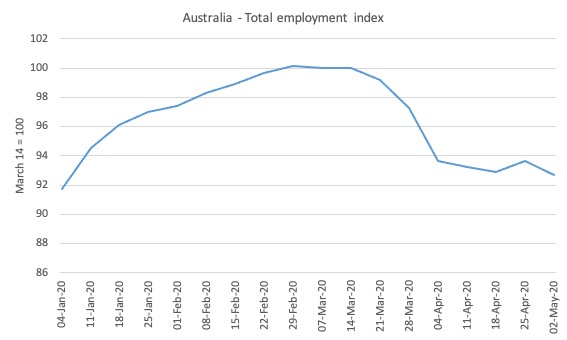
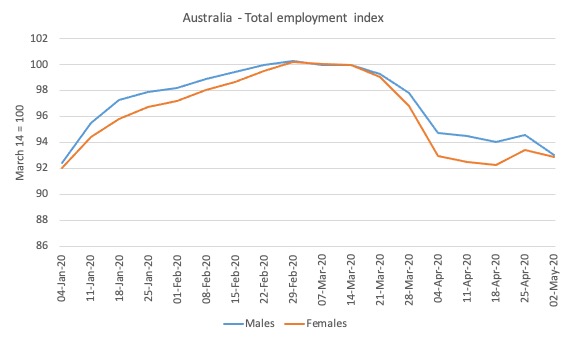
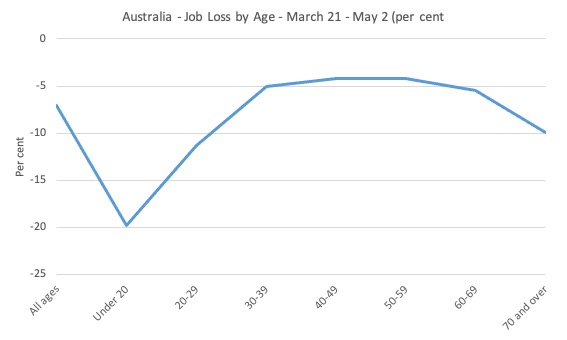
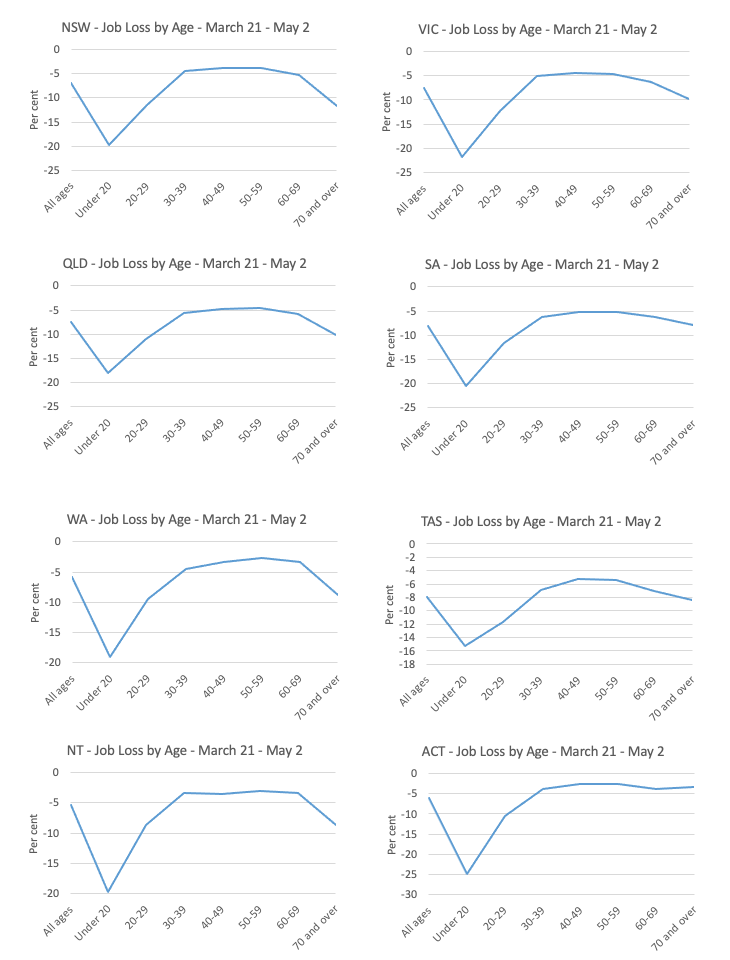
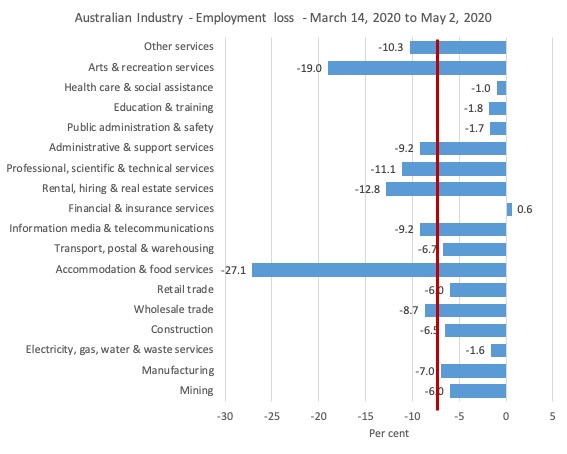
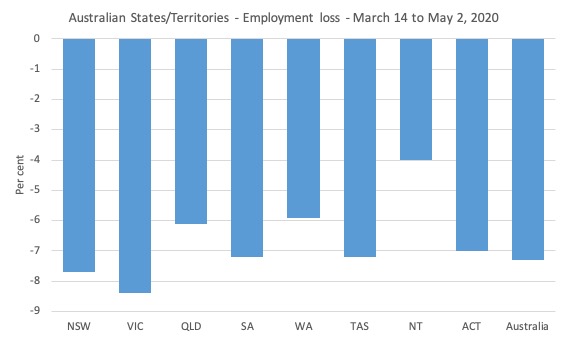
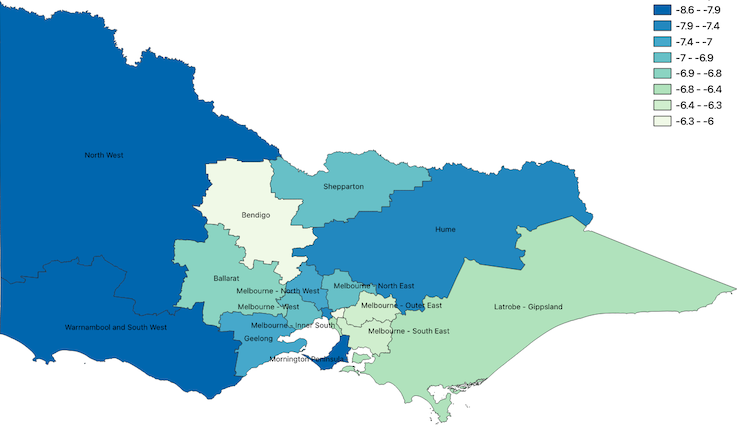
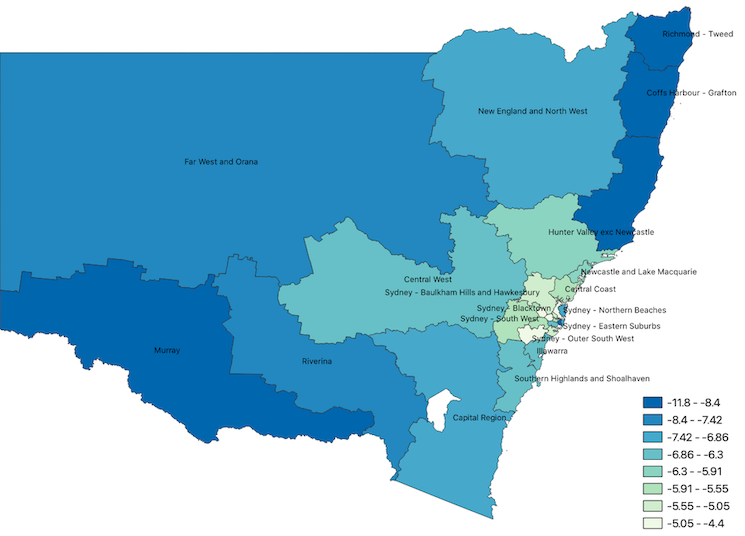
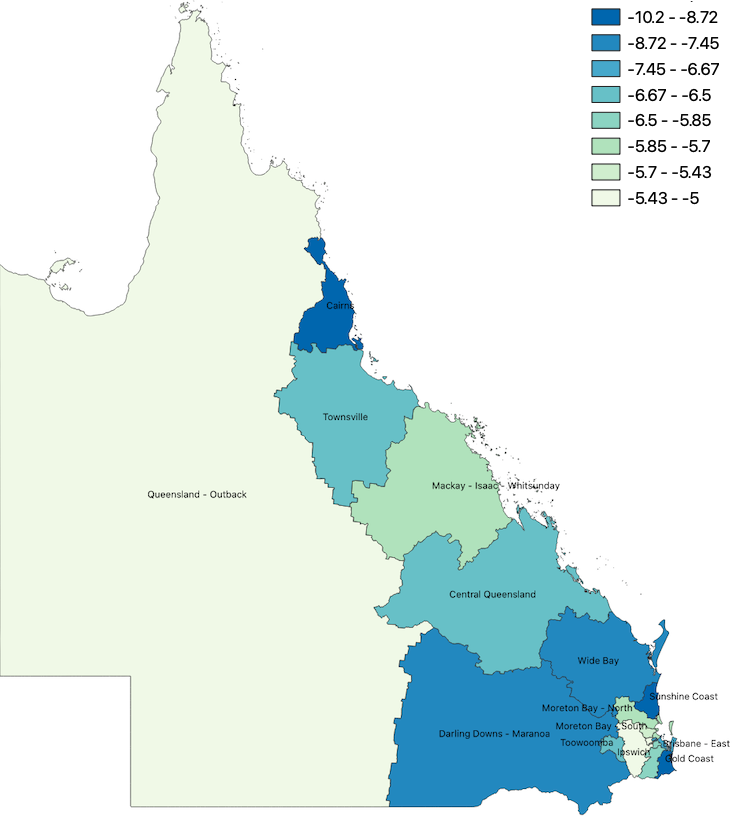
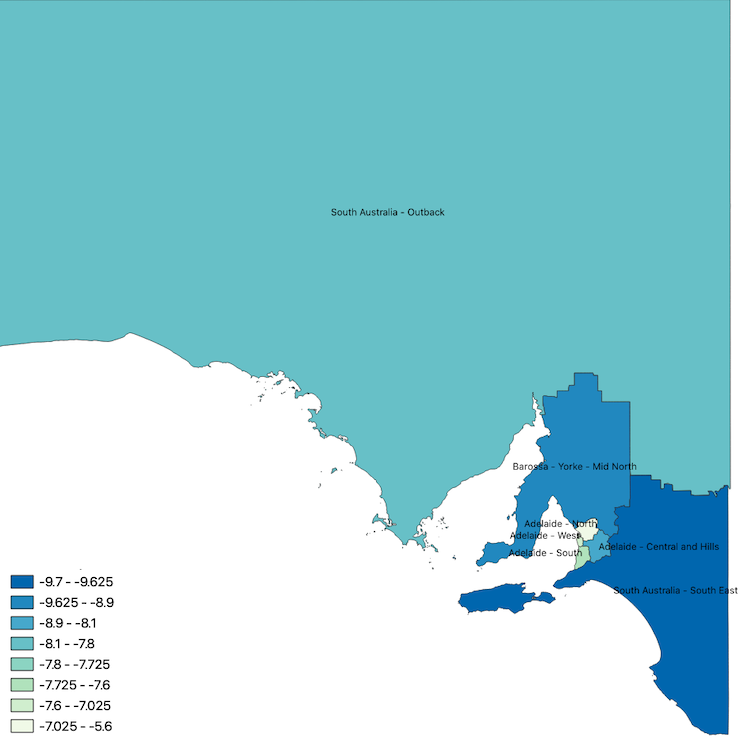
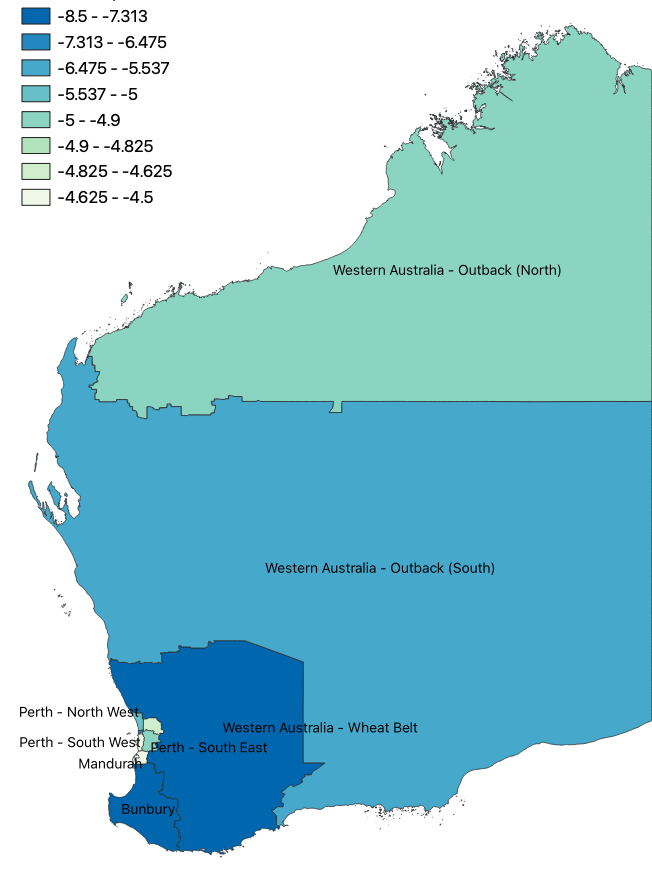

Bill,
Have I missed something or has your (approximately) ten point plan for fixing the world not appeared yet? I think we’re going to need it sooner rather than later!
“The scale of the job loss is now falling and perhaps we (have) now seen the worst of it.” I think Bill is too sanguine with this assessment. The number of small businesses and even larger businesses that have taken huge hits during the shutdown and have enough left to try to reopen will, I believe, find either that the hit was too large or that customers are too traumatized to resume normal social and economic functioning. Either way, those businesses will in longer term fashion join those that have already succumbed to the pandemic/panic, especially if covid stays with us indefinitely through spikes, mutations, etc. I argue with my adult son about this all the time. The plague was not bad enough, he says, to bring neoliberalism to its knees. I agree with that but always add the rejoinder that it’s not the plague but the reaction to it–personal, social, and governmental–that will be sufficient to end the neoliberal nightmare. The question is what world will we wake up to–better yet, what world will we choose to create–once the nightmare has ended. In that regard, Bill’s anticipated plan would be most welcome.
Bill mentioned in the ‘Industry job loss break down’ section:
“have done a lot of press interviews today because my research centre (CofFEE) publicly released our – Employment Vulnerability Index – Version 3.0 – and the point I have been making is that it is too early yet to tell how quickly this bounce back will occur.
It all depends on how many businesses survive the lockdown.”
I would argue that the business survival depends on the ‘clients’, and much less on the lockdown.
So, the bounce back will occur when the lockdown is ‘really’ over. Meaning, people have little fear for travelling, and that they enough money/saving for travelling again.
My guesstimate is that the bounce back will be around 6 months, plus or minus, (depending on vaccine discoveries, global infection cases etc).
So, regarding the core issue of ‘business’ survival, I believe they will almost all be there, because the hardest hit are the recreational/leisure industries, which are not too overly complex, judging from where I live, Thailand.
The government here is doing OK in terms of subsidies to people, but not to the businesses yet, but coming soon I hope.
However, this is the world I want to have less of it after the lockdown. Thailand should be promoting more on the local and green economy, increased domestic consumption, improved standard of living and better environment preservation, and much less on mass Tourism and exporting.
Maybe, the lockdown should be a little longer than shorter? But come to think of it, this is a very selfish idea.
vorapot
Note that the Greens launched an economic recovery package on Monday. Mentions a job guarantee without going into much detail.
In the section on paying for their plans they say continue to borrow at Record low interest and it will be all right in the long run.
Interesting that Job Guarantee/ UBI proposals edge ever closer to the mainstream but surely without an MMT framework it is not feasible.
Newton:
I came across this quote awhile ago, written by a young woman.
“The real damage is done by those millions who want to ‘survive.’ The honest men who just want to be left in peace. Those who don’t want their little lives disturbed by anything bigger than themselves. Those with no sides and no causes. Those who won’t take measure of their own strength, for fear of antagonizing their own weakness. Those who don’t like to make waves-or enemies. Those for whom freedom, honour, truth, and principles are only literature. Those who live small, mate small, die small. It’s the reductionist approach to life: if you keep it small, you’ll keep it under control. If you don’t make any noise, the bogeyman won’t find you. But it’s all an illusion, because they die too, those people who roll up their spirits into tiny little balls so as to be safe. Safe?! From what? Life is always on the edge of death; narrow streets lead to the same place as wide avenues, and a little candle burns itself out just like a flaming torch does. I choose my own way to burn.”
I think it sums up why things don’t fundamentally change. In most societies, if the majority of people are comfortable, they won’t make much or any effort to change the staus quo. That’s why we have inequality, homelessness, wars, corruption, and on it goes. That’s why nothing much is being done about climate chnage. That’s why we’ll perish. Real change won’t happen until most people are hungry, and then it will probably be violent. We blame the leaders and the powerful, but the masses let them get away with it, too wrapped up in their own little worlds, and I include myself. So this virus won’t lead to change, unless it causes much more damage than currently predicted.
*The quote is from Sophie Scholl, a German woman who was executed by the Nazis in 1943, age 21. Her crime was distributing anti Nazi pamphlets.
Great maps Bill. They illustrate really well where the job losses have occurred. It will be interesting to see how they change over the next several months.
Mark, the Scholl quote is greatly appreciated. Its truth is as simple and stark as it is poignant and profound. As for the ultimate upshot of this pandemic/panic, I have a strong feeling, based upon contacts with friends and others–and from just sensing what’s in the air–that we are currently at the beginning of something much more elemental and powerful than just another economic recession or depression. I sense that people I know and people in general, while still in the denial stage, have literally lost their minds, have become disoriented and anxiety-ridden and are grasping at this straw or that to maintain a veneer of stability, personal and social. Neoliberalism, IMHO, which had wound itself up so tightly as to appear impervious to alternatives, is, as we speak, suffering a nervous breakdown that will unravel it not only at the economic level but at the existential one. Only time will tell if I’m seeing too much here…or too little.